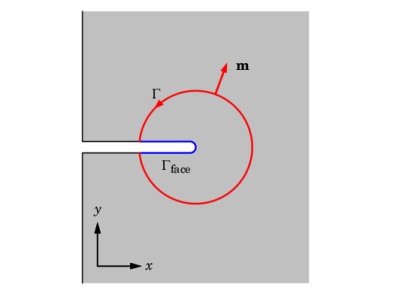When J-integral nodes are present, they will generate predefined plots. These plots reside in a Cracks plot group. The contents of the plots differ significantly between 2D and 3D, as described below.
In both 3D and 2D, a predefined evaluation group, named Fracture Mechanics Results, is also generated. It contains a table with values of J-integrals and stress intensity factors for all integration paths. In 3D, however, only the maximum value of J along the crack front is reported.
